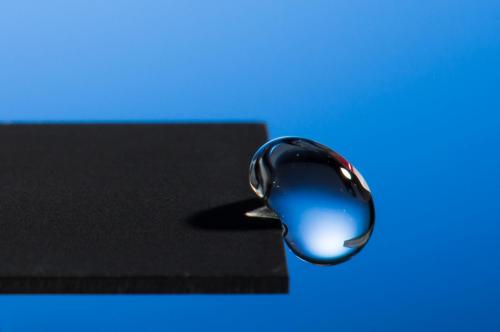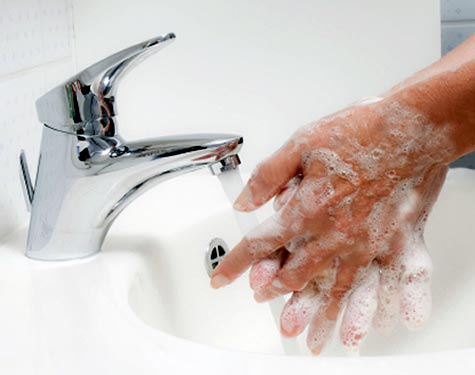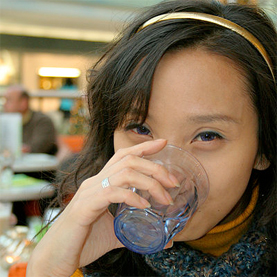Scientists at the University of Rochester have used lasers to transform metals into extremely water repellent, or super-hydrophobic, materials without the need for temporary coatings.

University of Rochester’s Institute of Optics Professor Chunlei Guo has developed a technique that uses lasers to render materials hydrophobic, illustrated in this image of a water droplet bouncing off a treated sample. Credit: J. Adam Fenster/University of Rochester
Super-hydrophobic materials are desirable for a number of applications such as rust prevention, anti-icing, or even in sanitation uses. However, as Rochester’s Chunlei Guo explains, most current hydrophobic materials rely on chemical coatings.
In a paper published today in the Journal of Applied Physics, Guo and his colleague at the University’s Institute of Optics, Anatoliy Vorobyev, describe a powerful and precise laser-patterning technique that creates an intricate pattern of micro- and nanoscale structures to give the metals their new properties. This work builds on earlier research by the team in which they used a similar laser-patterning technique that turned metals black. Guo states that using this technique they can create multifunctional surfaces that are not only super-hydrophobic but also highly-absorbent optically. Read more





